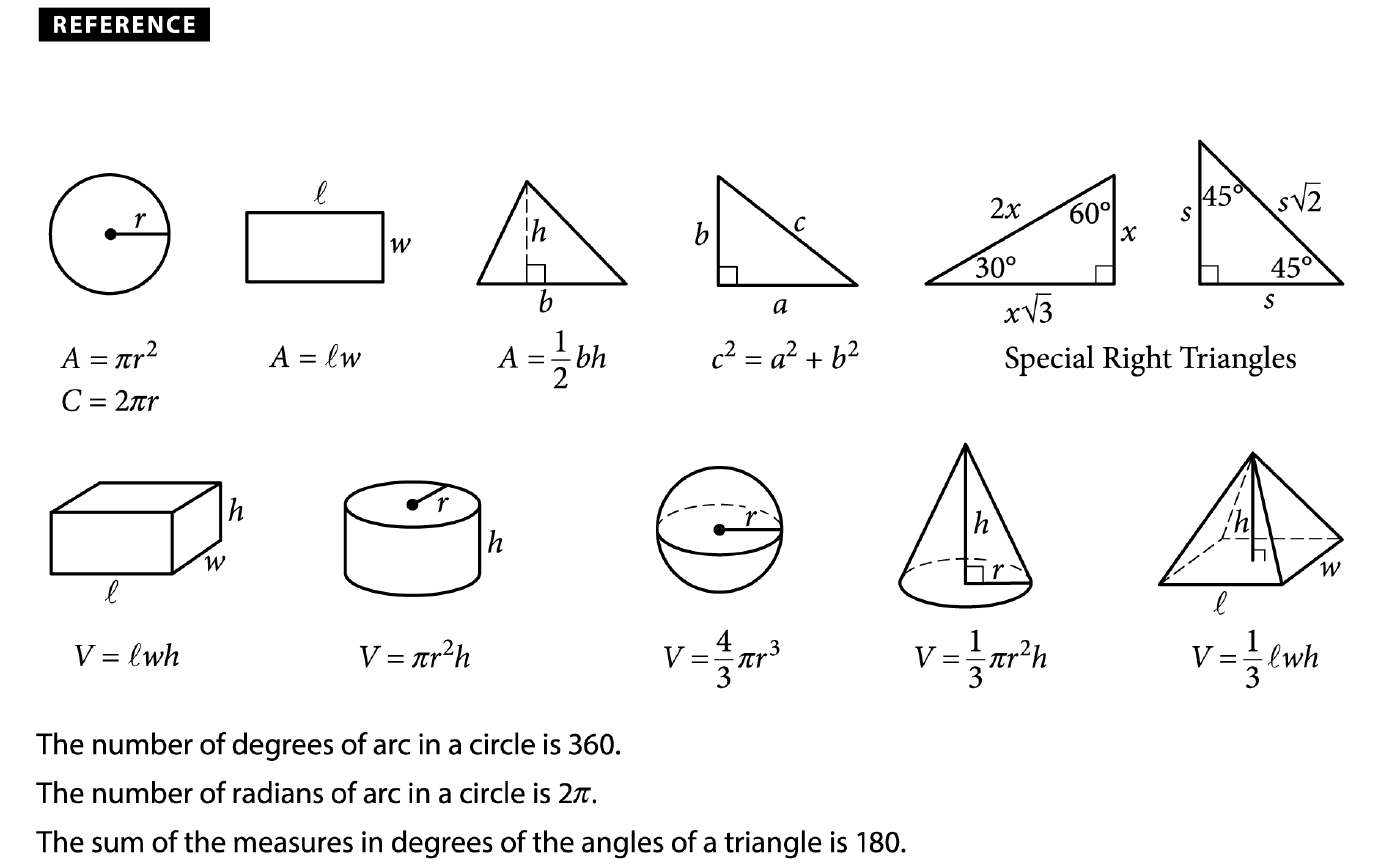If c is a constant in the equation 10x2 + c = -5x, and the equation has no real solutions, what is the value of c?
Correct Answer: D
Your Answer:
Explanation
D
The question asks for the value of a constant in a quadratic equation. To determine when a quadratic equation has no real solutions, use the discriminant. The discriminant is the part of the quadratic formula under the square root sign and is written as D = b2 - 4ac. When the discriminant is positive, the quadratic has exactly two real solutions; when the discriminant is 0, the quadratic has exactly one real solution; and when the discriminant is negative, the quadratic has no real solutions. Thus, the discriminant of this quadratic must equal a negative number. First, put the quadratic in standard form, which is ax2 + bx + c = 0, by adding 5x to both sides of the equation to get 10x2 + 5x + c = 0. Now a = 10, b = 5, and c = c. Plug these into the discriminant formula to get D = (5)2 - 4(10)(c), or D = 25 - 40c. Next, plug in the values from the answer choices to see which value of c makes the discriminant negative. Start with a middle answer and try (C), 0. If c = 0, the discriminant becomes D = 25 - 40(0), or D = 25. This is not negative, so eliminate (C). It might not be clear whether a larger or smaller number is needed, so pick a direction and try (D), 1. If c = 1, the discriminant becomes D = (5)2 - (4)(10)(1), or D = 25 - 40, and then D = -15. This is negative, so stop here. The correct answer is (D).
